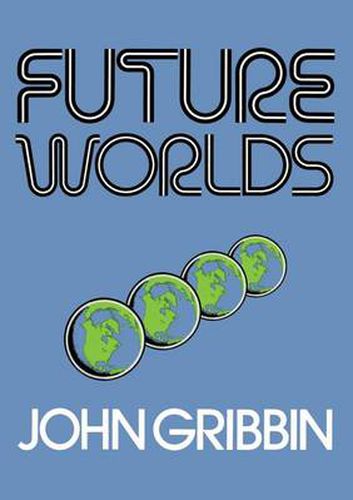Readings Newsletter
Become a Readings Member to make your shopping experience even easier.
Sign in or sign up for free!
You’re not far away from qualifying for FREE standard shipping within Australia
You’ve qualified for FREE standard shipping within Australia
The cart is loading…






This title is printed to order. This book may have been self-published. If so, we cannot guarantee the quality of the content. In the main most books will have gone through the editing process however some may not. We therefore suggest that you be aware of this before ordering this book. If in doubt check either the author or publisher’s details as we are unable to accept any returns unless they are faulty. Please contact us if you have any questions.
During the middle and late 1960s, concern about the way the world might be going began to move out of the arena of academic debate amongst specialists, and became a topic of almost everyday interest to millions of people. Concern about mankind’s disruption of the natural balance of ‘the environment’ brought the term ‘ecology’ into widespread use, though not always with the meaning to be found in the dictionary, and fears that world population might be growing so rapidly that very soon we would run out of food, resulting in mass starvation and a disastrous collapse of civilisation, helped to make books such as The Limits to Growth best sellers in the early 1970s. Today, quite rightly, decisions on long-term policy with widespread repercussions - most notably, those concerning nuclear energy planning - are a subject of equally widespread public discussion. But all too often such debate focuses on specific issues without the prob lems ever being related effectively to an overall vision of where the world is going and how it is going to get there. At the Science Policy Res~arch Unit, University of Sussex, a group working on studies of social and tech nological alternatives for the future has been contributing to ‘the futures debate’ for several years, cautiously (perhaps, in a sense, almost too cautiously!) developing a secure foundation for forecasting the way the world may develop.
$9.00 standard shipping within Australia
FREE standard shipping within Australia for orders over $100.00
Express & International shipping calculated at checkout
This title is printed to order. This book may have been self-published. If so, we cannot guarantee the quality of the content. In the main most books will have gone through the editing process however some may not. We therefore suggest that you be aware of this before ordering this book. If in doubt check either the author or publisher’s details as we are unable to accept any returns unless they are faulty. Please contact us if you have any questions.
During the middle and late 1960s, concern about the way the world might be going began to move out of the arena of academic debate amongst specialists, and became a topic of almost everyday interest to millions of people. Concern about mankind’s disruption of the natural balance of ‘the environment’ brought the term ‘ecology’ into widespread use, though not always with the meaning to be found in the dictionary, and fears that world population might be growing so rapidly that very soon we would run out of food, resulting in mass starvation and a disastrous collapse of civilisation, helped to make books such as The Limits to Growth best sellers in the early 1970s. Today, quite rightly, decisions on long-term policy with widespread repercussions - most notably, those concerning nuclear energy planning - are a subject of equally widespread public discussion. But all too often such debate focuses on specific issues without the prob lems ever being related effectively to an overall vision of where the world is going and how it is going to get there. At the Science Policy Res~arch Unit, University of Sussex, a group working on studies of social and tech nological alternatives for the future has been contributing to ‘the futures debate’ for several years, cautiously (perhaps, in a sense, almost too cautiously!) developing a secure foundation for forecasting the way the world may develop.